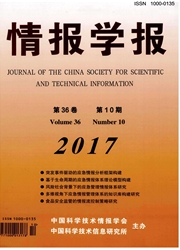

 中文摘要:
中文摘要:
随着政府对科技投入的增加,科研评价已然成为科技战略管理的重要工具。在微观层面,对研究人员的评价,目前许多研究机构不仅仅关注论文数,也关注论文发表期刊的质量。在实际操作中,从时间和经济条件考虑,大样本的学术期刊评价常常要参照定量指标,如期刊的h指标。虽然该指标学术意义重大,但本研究指出h指标本质问题之一在于:h核选取标准的局部性使得应用它进行期刊分类或排名时缺乏可比性,导致基于h指标的期刊评价方法有理论上的缺陷。针对该问题,本研究提出构造全局性的期刊h指标(Gh指标和Ghndj指标),并在实例研究的基础上提出基于Ghndj指标的期刊影响力等级划分新方法,即Lj分类法。通过案例研究与其他期刊评价结果相比,发现Lj期刊分类结果与英国运筹学协会的专家意见更为接近,且更具有实际操作意义。该研究可为科技管理提供学术期刊评价的薪思路。
 英文摘要:
英文摘要:
With the increasing investment in R&D, research evaluation has become an important tool for S&T strategy management. At the micro level, with the regard of researcher's evaluation, many institutes not only concern the number of papers, but also the impact of published journals. In practice, given the limited time and money, a large sample of journal evaluation mainly relies on quantitative indicators, such as the journals' h-index. Regardless of its significance, this study noted that one of the problems of the h-index is its local criteria in selecting the members of the h-core, which causes its values incomparable in classification or rankings. To solve this problem, this study proposes a global h index ( e. g. the Gh and Ghadj indicators), further the Lj classification approach of journal impact is proposed based on the Ghadj indicator. From the compare study with other peer review based results, it is found that our rankings are much closer with the COPIOR experts' advice, and more practical. This study could provide useful tools for S&T management.
 同期刊论文项目
同期刊论文项目
 同项目期刊论文
同项目期刊论文
 期刊信息
期刊信息
